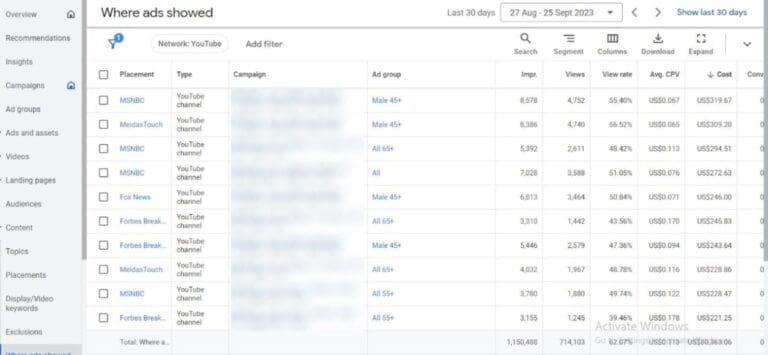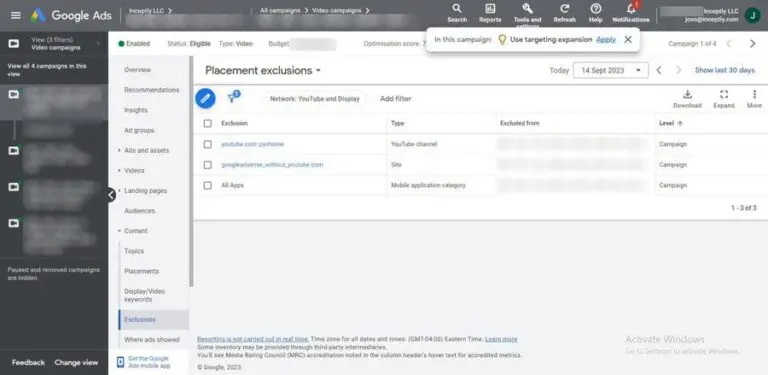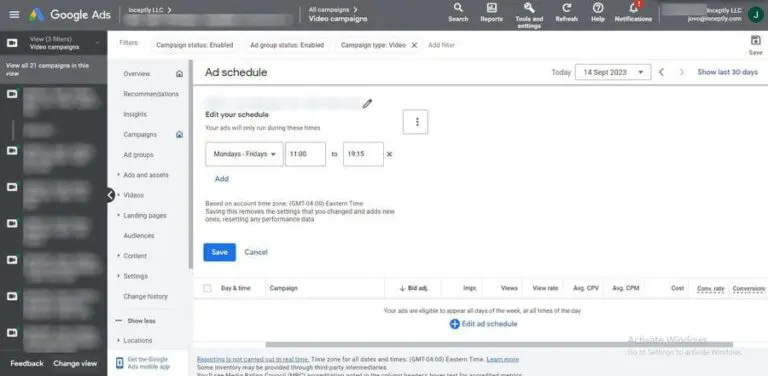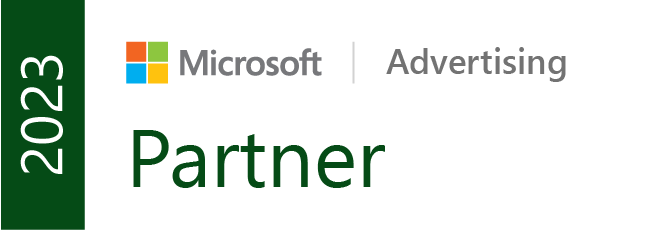
Want to see what’s working right now when it comes to Media Buying on YouTube?
Today, you’re going to discover my top 4 YouTube ad media buying “hacks” that are working great for us right now.
Our agency, Inceptly, is one of the world’s top direct-response video marketing agencies. We’ve managed over $200 million USD on YouTube and continue to innovate.
My name is Jovan Simić, I am a Senior Media Buyer at Inceptly and responsible for over $30M in profitable ad spend. During my years in this agency, I have collaborated with prominent brands, including Advanced Bionutritionals, Amplify Solar, Fittrack, John Crestani, and The Social Man.
Here are the 4 tactics you’re going to learn today:
The 2 exclusion settings to stop wasting money on sub-par ad inventory
YouTube Shorts Ad “Exposure Maximizer” Setting: Got a vertical format video performing well on FB/IG/TikTok? Make sure to use these settings to maximize your YT Shorts ad results.
“When should I pause an ad or keep it running?” ← find out exactly how I approach this
Day-Parting 101: How to stop wasting adspend on “bad” times-of-day
Let’s dive in…
Want to brainstorm with our team on new ways to scale your business with YouTube Ads (and other performance video platforms)?
Join us for a free YouTube ad brainstorming session by clicking the button below 👇
1. How to stop wasting money on sub-par ad inventory
One common challenge when running YouTube ads is the variation in quality between in-stream and in-feed traffic.
In-stream ads appear before or during videos, while in-feed ads are displayed within the YouTube feed.

While in-feed traffic may not offer the same level of engagement as in-stream ads, it can still be a valuable source of traffic at a lower cost.

To control in-feed traffic, you can leverage exclusions within your ad settings. While you can’t directly choose whether your ads will appear as in-stream or in-feed, you can exclude or at least limit in-feed traffic to focus on higher-quality in-stream placements. This can be done by adding exclusions in your ad campaign settings, allowing you to prioritize the placements that align with your campaign goals.
Here are the placement exclusions to use 👇

Additionally, consider the visual elements of your ads when targeting in-feed traffic. Thumbnails and headlines play a crucial role in capturing viewers’ attention and encouraging them to click. Optimize your thumbnails and headlines to make them compelling and relevant, increasing the chances of engagement and click-through rates.
2. How to maximize your YouTube Shorts ad exposure
YouTube Shorts, the platform’s answer to the rising popularity of short-form video content, provides a unique opportunity for advertisers. With YouTube Shorts, you can reach a younger, highly engaged audience and leverage the platform’s algorithm to increase visibility.
When targeting YouTube Shorts, ensure that you exclude other devices and focus solely on mobile phones. By narrowing your target audience to mobile users, you can optimize your ads specifically for the Shorts format and maximize their impact.
Here’s how to set it up👇

IMPORTANT NOTE: YouTube Shorts is not limited to one-minute videos. You can test various video lengths, including two-minute ads, and explore vertical and horizontal formats. Test different lengths and formats to determine what resonates best with your audience and drives the desired results.
3. “When should I pause low-performing ads?” 👉 Here's the answer...
Measuring the success of your YouTube ads is crucial to optimizing your campaign’s performance and minimizing wasted ad spend. One key metric to monitor is the cost per acquisition (CPA). If your CPA exceeds your target threshold, it may be time to consider pausing the ad.
While the initial days of a campaign may show unfavorable results, giving it some time for optimization is important. Generally, one week of testing is sufficient to evaluate the effectiveness of an ad. However, if the CPA is significantly higher than your target during the first few days, it may be a sign that the ad is not resonating with your audience.
Here is a quick example.
Let’s say you want to hit a 150-dollar CPA.
If the CPA is in that range or a little bit higher in the first couple of days, you should keep running it and trying different targeting options.
But if the CPA exceeds 100%, you should not spend more than 700 to 1K dollars per video.
IMPORTANT: Keep an eye on landing page conversion rates…
Also, if you have a good number of add-to-carts or/and begin checkouts, but the offer is not converting as expected, that tells us that the video is really engaging to the user, but you might have an issue with the landing page and that the conversion rate on the landing page needs to be improved.
So, consider experimenting with different targeting options and adjusting your ad settings to optimize performance. But keep in mind that tracking intermediate steps, such as add-to-carts and initiate checkouts, can provide valuable insights into user engagement and potential issues with your landing page.
4. How to stop wasting adspend on "bad" times-of-day
Timing is everything when it comes to YouTube ads.
Check out this example of hour-by-hour variability 👇

To optimize your ad spend and ensure your ads reach the right audience at the right time, consider leveraging dayparting.
Here’s what it looks like inside Google Ads:

Dayparting allows you to set specific times of the day when your ads will be shown, aligning with your target audience’s preferences and behaviors. By excluding certain hours or parts of the day, you can avoid spending on periods when viewers might be less engaged or distracted.

Experiment with different time frames and monitor the performance of your ads during specific hours.

Analyze the data to identify peak engagement periods and adjust your dayparting settings accordingly. This will help you make the most of your ad budget and increase the efficiency of your campaigns.
TL;DR
I’m always amazed at how quickly things change when it comes to running YouTube ads (or any other paid media) at scale. Here, I’ve shared some of my favorite “hacks” that work for us right now as we manage millions per month in paid video traffic, which will teach you how to:
- stop wasting money on sub-par ad inventory,
- maximize your YouTube Shorts ad exposure,
- know when to pause low-performing ads,
- stop wasting adspend on “bad” times of the day.
With these tactics in your arsenal, you can unlock the power of YouTube ads and drive impactful results for your business.
Remember, YouTube advertising is an ever-evolving landscape, so stay informed and adapt your strategies to keep up with the latest trends and best practices. With a witty, casual, yet expert tone, you can navigate YouTube ads’ complexities and succeed in this dynamic digital marketing realm.

Jovan Simić, Senior Media Buyer
Jovan Simić is an experienced media buyer responsible for over $30M in profitable ad spend. At Inceptly, Jovan has collaborated with prominent brands, including Advanced Bionutritionals, Amplify Solar, Fittrack, John Crestani, and The Social Man, demonstrating his versatility and expertise. His deep understanding of media buying and consistent track record of success make him an invaluable asset to the industry.
Like this post? Let's continue the conversation!
Get in touch with us by shooting us a quick email or tagging us on LinkedIn or Instagram, and sharing your thoughts. Your feedback helps us keep our blog relevant and interesting.
Like the advice but not sure how to implement it? Let us help!
Contact us to discuss avenues for your brand’s growth with performance advertising.
You’ll get an insightful evaluation of your ads + actionable tips to help amp up your direct response revenue. No strings attached!
Get Our Newsletter
Need Help?
Get in touch with us for an insightful evaluation of your ads + actionable tips to help amp up your direct response revenue



